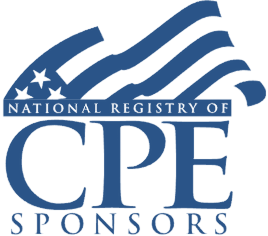- videocam Live Webinar with Live Q&A
- calendar_month June 26, 2025 @ 1:00 p.m. ET./10:00 a.m. PT
- signal_cellular_alt Intermediate
- card_travel Tax Law
- schedule 90 minutes
Income Tax Treatment of SAFEs and Convertible Debt: Navigating Sections 1202 and 1045, Section 368, Section 83
Welcome! Save 30% on all CLE, CPE, and Professional Skills webinars, plus 15% off any annual pass with code HOLIDAY25
About the Course
Introduction
This CLE/CPE webinar will provide attorneys and tax professionals an in-depth analysis of the tax treatment and challenges of a simple agreement for future equity (SAFE) and convertible debt. The panel will discuss the typical structures of SAFEs and convertible debt, critical tax considerations for these transactions, navigating potential negative tax consequences for taxpayers, and the impact of Sections 1202 and 1045, Section 368, and other tax provisions.
Description
Convertible notes and SAFEs are common investment instruments used by startups and other businesses seeking to raise capital between priced financing rounds. However, the tax characterization of such instruments is not always clear, and the use of these instruments could have a negative tax result for certain investors in the absence of efficient tax planning.
Counsel representing emerging growth companies and their investors must carefully consider the tax implications of each financing mechanism to evaluate the preferred structure for a particular deal while also avoiding negative tax consequences.
Listen as our authoritative panel discusses the typical structures of SAFEs and convertible debt, key tax considerations for these transactions, navigating potential negative tax consequences for taxpayers, and the impact of Sections 1202 and 1045, Section 368, and other tax provisions.
Presented By

Mr. Karachale advises individuals and business entities on a broad range of tax planning and tax controversy matters. He has written extensively on QSBS issues. He counsels taxpayers on employee benefits and executive compensation issues, including deferred compensation and Section 409A. He assists clients with international tax compliance, including voluntary disclosures and related planning matters. He represents individuals and an array of business entities in controversy matters before the IRS and California state tax authorities.

Mr. Lebowitz advises clients on the tax-efficient planning and execution of a broad range of transactions, with a particular focus on the formation, operation and investing activities of private equity and hedge funds.

-
This 90-minute webinar is eligible in most states for 1.5 CLE credits.
-
CPE credit is not available on recordings.
-
BARBRI is a NASBA CPE sponsor and this 90-minute webinar is accredited for 1.5 CPE credits.
-
BARBRI is an IRS-approved continuing education provider offering certified courses for Enrolled Agents (EA) and Tax Return Preparers (RTRP).
-
Live Online
On Demand
Date + Time
- event
Thursday, June 26, 2025
- schedule
1:00 p.m. ET./10:00 a.m. PT
I. Overview of utilizing SAFEs and convertible debt
II. SAFEs: key terms and tax implications
A. Treatment for federal income tax purposes (Sections 1202 and 1045)
B. Tax treatment for purposes of Section 368
C. Tax treatment for purposes of Section 83
III. Convertible notes: key terms and tax implications
IV. Best practices and pitfalls to avoid
The panel will discuss these and other key issues:
- What are the typical terms of a SAFE?
- What are the tax implications for utilizing SAFEs?
- What are the tax implications of SAFEs under Sections 1202, 1045, 83, and 368?
- How does the tax treatment of a SAFE differ from a convertible debt instrument?
Learning Objectives
After completing this course, you will be able to:
- Recognize the key tax provisions when structuring SAFEs and convertible debt
- Understand the tax implications for utilizing SAFEs under current tax law
- Recognize key tax issues for SAFEs under IRC Sections 1202 and 1045
- Acquire tax planning strategies for minimizing potential tax liability when utilizing SAFEs
- Field of Study: Taxes
- Level of Knowledge: Intermediate
- Advance Preparation: None
- Teaching Method: Seminar/Lecture
- Delivery Method: Group-Internet (via computer)
- Attendance Monitoring Method: Attendance is monitored electronically via a participant's PIN and through a series of attendance verification prompts displayed throughout the program
- Prerequisite:
Three years+ business or public firm experience preparing complex tax forms and schedules, supervising other preparers or accountants. Specific knowledge and understanding of pass-through taxation, including taxation of partnerships, S corporations and their respective partners and shareholders.

BARBRI, Inc. is registered with the National Association of State Boards of Accountancy (NASBA) as a sponsor of continuing professional education on the National Registry of CPE Sponsors. State boards of Accountancy have final authority on the acceptance of individual courses for CPE Credits. Complaints regarding registered sponsons may be submitted to NASBA through its website: www.nasbaregistry.org.

BARBRI is an IRS-approved continuing education provider offering certified courses for Enrolled Agents (EA) and Tax Return Preparers (RTRP).

BARBRI CE webinars-powered by Barbri-are backed by our 100% unconditional money-back guarantee: If you are not satisfied with any of our products, simply let us know and get a full refund. Contact us at 1-800-926-7926 .
Unlimited access to premium CLE courses:
- Annual access
- Available live and on-demand
- Best for attorneys and legal professionals
Unlimited access to premium CPE courses.:
- Annual access
- Available live and on-demand
- Best for CPAs and tax professionals
Unlimited access to premium CLE, CPE, Professional Skills and Practice-Ready courses.:
- Annual access
- Available live and on-demand
- Best for legal, accounting, and tax professionals
Unlimited access to Professional Skills and Practice-Ready courses:
- Annual access
- Available on-demand
- Best for new attorneys
Related Courses
Recommended Resources

How CPE Can Bridge the Gap Between What You Know and What You Need to Know
- Career Advancement

Gain a Competitive Edge Through Efficient CPE Strategies
- Learning & Development
- Business & Professional Skills
- Career Advancement


